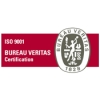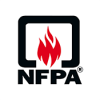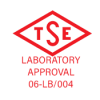




QUALITY MANAGEMENT
Fatsa Chemical Industry and Trade Limited Company, Bureau Veritas, UKAS operates a quality management system that complies with ISO 9001:2015 requirements.

ECO-FRIENDLY
Recent changes to global environmental legislation regarding the manufacture and supply of fluorosurfactants used in AFFFs have reformulated our foam concentrates to use C6 fluorosurfactants instead of longer chain molecules.










Fire Fighting Foam Concentrates
Fire Fighting Blog
5 Life Saving Effects In Fire Fighting
What is Considered in the Design of Fire Extinguishing Systems?
Most Effective Fire Extinguishing Methods
Foam Quality and Control
How Does Foam Work?
What is Fire Fighting Foam?
What is Fire Fighting Foam?
Foam is a dense composition of air-filled bubbles. Foam consists of three components: Foam, Water and Air. Foam solution is obtained by mixing the proportioned water with the foam concentrate. Mixing of the foam solution with air is achieved by passing it through foaming devices.
When Was Fire Fighting Foam Invented?
Fire fighting foam was invented by the Russian engineer and chemist Aleksandr Loran in 1902. Impressed by large, difficult-to-extinguish oil fires that he had seen there, Loran tried to find a liquid substance that could deal effectively with them. He invented fire-fighting foam, which was successfully tested in experiments in 1902 and 1903.
Types of Fire Extinguishing Foam?
There are two main types of fire extinguishing foam as Class A and Class B. Class A foams are used to extinguish fires caused by wood, paper and brush. Class B firefighting foams are especially used in areas such as airports, storage tanks, terminals, petroleum or chemical product processing facilities, military facilities.




